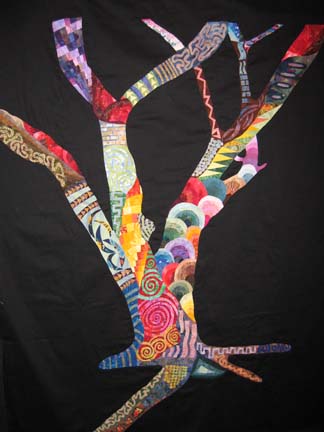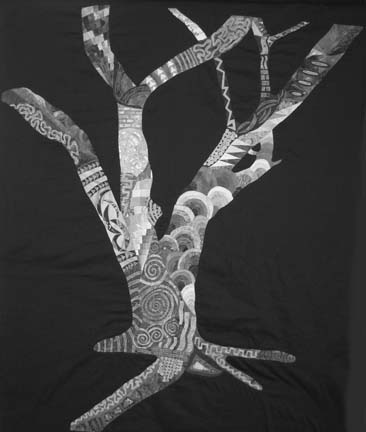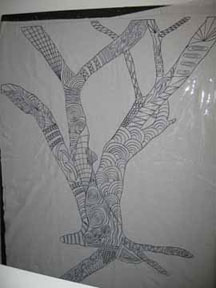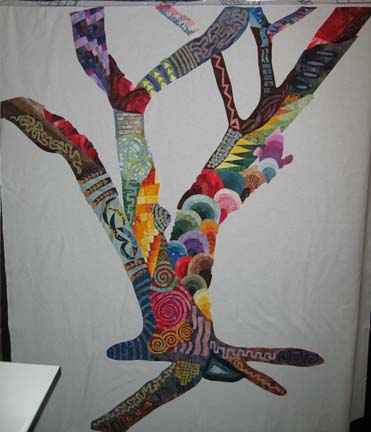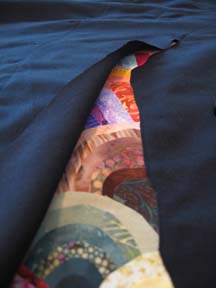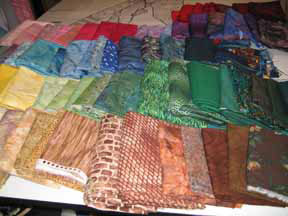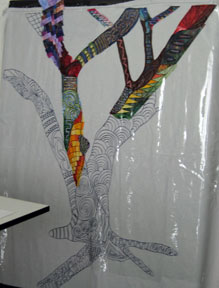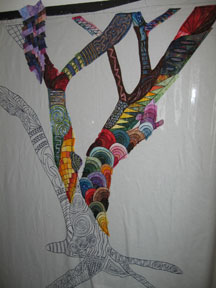I have finally finished the machine applique process. I use a tight zigzag with a 1 mm length and 2 mm width which takes some practice to run smoothly since it is so small. I catch myself leaning in closer and closer to the machine, and sometimes, afterwards, my back hurts. Maybe my eyesight is changing.
It was seeing a quilt by Ricky Tims a couple of years ago that led me to use complementary colors for the thread. It gives an energy that wouldn’t otherwise be there. The only place I didn’t do that was on the small circles. I tried complementary color thread in a free motion circle around the outside edges — and I didn’t like the way it looked. Then I tried the same thread with the zigzag and it still didn’t look right. I finally decided that the shapes were so small that the zigzag was ruining the shape of the applique if used in a contrasting thread color — so for the two areas of the quilt with small circles, I used the zigzag with a matching thread color.
The interesting part of this experiment is that this picture is not altogether different from the picture of the quilt without any applique thread on it. It is more of a secret surprise for those that care to inspect the piece up close.
A year or so ago, someone on the quiltart list suggested taking final pieces into Photoshop and removing the color to view the color values. Although it looks like I have been working in color, all along I have been playing with color values — and it is interesting to see the piece without color.
It is always surprising to me how design is affected by value. It is true that value does all of the work and color gets all of the credit.
